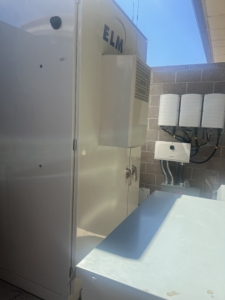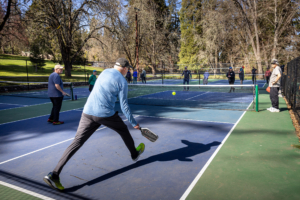(Ashland, Ore.) — Southern Oregon University President Rick Bailey announced today that the university will rebuild itself as an institution with a target of a $60 million annual budget – 15% lower than its current total – in response to devastating funding trends at both the state and federal levels. The university will rely, in part, on a rarely used contractual mechanism called financial exigency to respond to its fiscal crises and quickly transform itself into a smaller but much more resilient institution.
The decision to enable the exigency process was formalized through a joint declaration between President Bailey and the Associated Professors of Southern Oregon University (APSOU), the faculty union. Exigency can only be triggered by otherwise unsolvable financial challenges like those facing SOU, and enables the university to take the steps necessary to reduce expenses including personnel costs, regardless of protections that may otherwise be afforded under the terms of collective bargaining agreements. It allows for expeditious and decisive actions.
“Details of the provisional plan that we have put forward are extremely and deeply personal, as they will affect not only several SOU programs and services that we all respect, but cherished members of our campus family,” President Bailey said. “Even though the path we are taking will put the university on much better long-term fiscal footing, these changes will result in heartbreaking outcomes for people who we love and respect.”
The provisional plan – which will be finalized in late August, following potential input from SOU’s faculty union – was outlined for the university’s employees and students during a “Campus Conversation” this morning at the Music Recital Hall.
SOU has been confronted this year with funding inadequacy at the state level, unprecedented uncertainty in its federal partnerships and lagging enrollment and retention. The Oregon Legislature’s appropriation for the 2025-27 biennium does not keep pace with basic cost increases such as retirement and medical benefits that are outside of the university’s control. The federal government has signaled its intent to dismantle or reduce support systems for low-income students, such as Pell grants and the Title IV TRIO-Success at Southern Program. And SOU’s enrollment has declined steadily over the past decade, due to demographics, changing attitudes toward higher education, financial issues and other factors.
The SOU Board of Trustees directed university leaders last month to identify $5 million in budget reductions to be achieved before the end of the 2025-26 fiscal year. It was as President Bailey and his leadership team confronted that challenge when the need for even more monumental change became apparent.
“We recognize that the fiscal exigency process will be deeply challenging for many in the SOU community,” said Ben Cannon, Executive Director of Oregon’s Higher Education Coordinating Commission. “However, today’s unfortunate news – and the difficult financial reality driving it – is a critical step in positioning SOU for long-term stability.
“SOU’s plan aims to ensure students can continue to access high-quality courses and programs, while orienting SOU’s future towards a focused set of offerings that are aligned with regional and statewide needs,” Cannon said.
Despite instituting the SOU Forward initiative just two years ago – a plan to reduce reliance on state funding and tuition revenue by cutting costs (by eliminating 13% of the university’s work force), leveraging grants and philanthropy, and cultivating new revenue sources – the university found itself in a new crisis caused by external forces outside the scope of its immediate control.
Members of the SOU campus community submitted more than 70 pages of ideas and proposals as President Bailey and his cabinet members sought to decrease costs or rethink business processes. There have been budget-related updates to campus each week, consultations with academic deans and program chairs, and multiple meetings with shared governance partners – representatives from the unions for both faculty and classified staff, the organization that represents unclassified staff and the Associated Students of Southern Oregon University.
Ultimately, the president and his leadership team determined that SOU has an infrastructure of faculty and staff members that could support student enrollment as high as 7,500 – but the university’s full-time equivalent enrollment has been closer to 3,500 for several years.
The plan outlined today is based on the fundamental questions of what a $60 million university should look like, what the scope of its academic portfolio should be, and what SOU programs and services are mission-critical rather than mission-enhancing.
The model that is emerging will be built on responsiveness, focus, and resiliency, with academic programs strategically identified to match the academic preferences and professional needs of the region and state. Today’s Campus Conversation shed some light on where the reductions are likely to occur, but specific positions will only be finalized after a formal process between the university and the faculty union.
“This transformation will ensure that we focus our energy and resources toward programs that help the university to become an even more responsive economic prosperity engine for our region and for the benefit of all Oregonians,” President Bailey said.
Reducing expenses will remain just one part of SOU’s fiscal strategy, as the university will continue its efforts with philanthropy and grants, and to diversify revenue streams. The successes of the SOU Forward plan and earlier efforts include $22 million in grant support and $50 million in philanthropic gifts since 2021, $5.8 million in funding for solar projects and the ongoing identification and evaluation of private development partners for an older adult living complex on campus.
-SOU-






 The projects were installed by Ashland-based contractor True South Solar as part of SOU’s first round of funding from the
The projects were installed by Ashland-based contractor True South Solar as part of SOU’s first round of funding from the 



 The free event is a celebration of curiosity and connection. The open house is a one-stop gateway to all that OLLI offers, with approximately 150 fall course previews, demonstrations and exhibits from dozens of like-minded community organizations.
The free event is a celebration of curiosity and connection. The open house is a one-stop gateway to all that OLLI offers, with approximately 150 fall course previews, demonstrations and exhibits from dozens of like-minded community organizations.